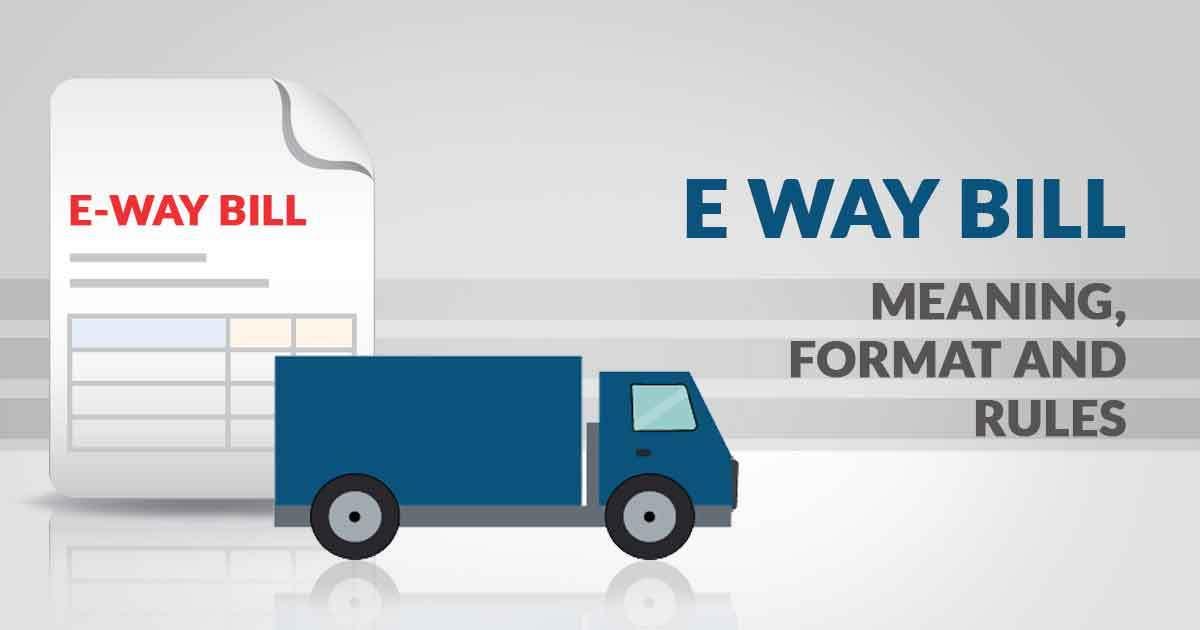News
GST E Way Bill Guide : Important Rules & Compliance....
Waybill compliance was a nightmare for suppliers in the pre-GST era. Supply of goods could not take place without obtaining these ‘waybills’ from VAT authorities. A waybill is a physical document that allows movement of goods. The compliance around waybills has caused restricted movement of goods across states. Under GST, the waybill is replaced by an e-way bill which aims at mitigating the problems caused by waybill compliance.
E-way bill is an electronic way bill for movement of goods which can be generated on the GSTN (common portal). A ‘movement’ of goods of more than Rs 50,000 in value cannot be made by a registered person without an e-way bill.
E-way bill will also be allowed to be generated or canceled through SMS.
When an e-way bill is generated a unique e-way bill number (EBN) is allocated and is available to the supplier, recipient, and the transporter.
When should an e-way bill be generated?
E-way bill will be generated when there is movement of goods –
- In relation to a ‘supply’
- For reasons other than a ‘supply’ ( say a return)
- Due to inward ‘supply’ from an unregistered person
What is a ‘supply’ in case of an e-way bill?
For this purpose, a supply may be either of the following:
- A supply made for a consideration (payment) in the course of business
- A supply made for a consideration (payment) which may not be in the course of business
- A supply without consideration (without payment)
In simpler terms, the term ‘supply’ usually means a:
1. Sale – sale of goods and payment made
2. Transfer – branch transfers for instance
3. Barter/Exchange – where the payment is by goods instead of in money
Therefore, e-way bills must be generated on the common portal for all these types of movements.
Who can generate an e-way bill?
- E-way bill must be generated when there is a movement of goods of more than Rs 50,000 in value to or from a Registered Person. A Registered person or the transporter may choose to generate and carry e-way bill even if the value of goods is less than Rs 50,000.
- Unregistered persons or their transporters may also choose to generate an e-way bill. This means than an e-way bill can be generated by both registered and unregistered persons. However, where a supply is made by an unregistered person to a registered person, the receiver will have to ensure all the compliances are met as if they were the supplier.
List of People Who Can Generate an E-Way Bill
| Who | When | Part | Form |
| Every Registered person under GST | Before movement of goods | Fill Part A | Form GST EWB-01 |
| Registered person is consignor or consignee (mode of transport may be owned or hired) OR is recipient of goods | Before movement of goods | Fill Part B | Form GST EWB-01 |
| Registered person is consignor or consignee and goods are handed over to transporter of goods | Before movement of goods | Fill Part B | The registered person shall furnish the information relating to the transporter in Part B of FORM GST EWB-01 |
| Transporter of goods | Before movement of goods | Generate e-way bill on basis of information shared by the registered person in Part A of FORM GST EWB-01 | |
| An unregistered person under GST and recipient is registered | Compliance to be done by Recipient as if he is the Supplier. | 1. If the goods are transported for a distance of ten kilometers or less, within the same State/Union territory from the place of business of the consignor to the place of business of the transporter for further transportation, the supplier or the transporter may not furnish the details of conveyance in Part B of FORM GST EWB-01.
2. If supply is made by air, ship or railways, then the information in Part A of FORM GST EWB-01 has to be filled in by the consignor or the recipient |
Note: If a transporter is transporting multiple consignments in a single conveyance, they can use the form GST EWB-02 to produce a consolidated e-way bill, by providing the e-way bill numbers of each consignment. If both the consignor and the consignee have not created an e-way bill, then the transporter can do so by filling out PART A of FORM GST EWB-01 on the basis of the invoice/bill of supply/delivery challan given to them.
Can e-way bills be used during return filing?
Yes. The information provided in Part A of the Form GST EWB-01 can be used for preparing GSTR-1.
What is the validity of an e-way bill?
An e-way bill is valid for periods as listed below, which is based on the distance traveled by the goods. Validity is calculated from the date and time of generation of e-way bill-
| Distance | Valid from | Valid for |
| Up to 100km | Date & time at which e-way bill is generated | 1 day |
| For every 100 km after that | Date & time at which e-way bill is generated | An extra day |
